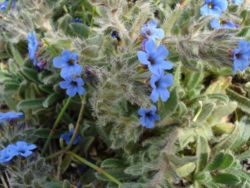Alkanet
| Alkanet {{{status}}} Fossil range: {{{fossil_range}}}
| ||||||||||||||||||||||||||||||||||||||||||||||||||||||||||||||||||
|---|---|---|---|---|---|---|---|---|---|---|---|---|---|---|---|---|---|---|---|---|---|---|---|---|---|---|---|---|---|---|---|---|---|---|---|---|---|---|---|---|---|---|---|---|---|---|---|---|---|---|---|---|---|---|---|---|---|---|---|---|---|---|---|---|---|---|
 Dyer's Bugloss | ||||||||||||||||||||||||||||||||||||||||||||||||||||||||||||||||||
| Plant Info | ||||||||||||||||||||||||||||||||||||||||||||||||||||||||||||||||||
| ||||||||||||||||||||||||||||||||||||||||||||||||||||||||||||||||||
| Scientific classification | ||||||||||||||||||||||||||||||||||||||||||||||||||||||||||||||||||
| ||||||||||||||||||||||||||||||||||||||||||||||||||||||||||||||||||
| [[{{{diversity_link}}}|Diversity]] | ||||||||||||||||||||||||||||||||||||||||||||||||||||||||||||||||||
| {{{diversity}}} | ||||||||||||||||||||||||||||||||||||||||||||||||||||||||||||||||||
| Binomial name | ||||||||||||||||||||||||||||||||||||||||||||||||||||||||||||||||||
| Alkanna tinctoria (L.) Tausch | ||||||||||||||||||||||||||||||||||||||||||||||||||||||||||||||||||
| Trinomial name | ||||||||||||||||||||||||||||||||||||||||||||||||||||||||||||||||||
| {{{trinomial}}} | ||||||||||||||||||||||||||||||||||||||||||||||||||||||||||||||||||
| Type Species | ||||||||||||||||||||||||||||||||||||||||||||||||||||||||||||||||||
| {{{type_species}}} | ||||||||||||||||||||||||||||||||||||||||||||||||||||||||||||||||||
| {{{subdivision_ranks}}} | ||||||||||||||||||||||||||||||||||||||||||||||||||||||||||||||||||
| [[Image:{{{range_map}}}|{{{range_map_width}}}|]] | ||||||||||||||||||||||||||||||||||||||||||||||||||||||||||||||||||
| Synonyms | ||||||||||||||||||||||||||||||||||||||||||||||||||||||||||||||||||
| {{{synonyms}}} |
The name alkanet generally refers to Alkanna tinctoria or Dyer's Bugloss (though it may be used for Anchusa officinalis or Common Bugloss).
It is a member of the Borage family Boraginaceae.
Alkanna tinctoria is also known as orchanet, dyer's bugloss, Spanish bugloss or bugloss of Languedoc. Its name comes from the Spanish word alcana, from Arabic al-hena, after henna, (Lawsonia inermis).
Alkanet is grown in the south of France and on the shores of the Levant. It has a dark red root of blackish appearance externally but inside showing a blue-red meat, surrounding a whitish core. Its root yields a fine red colouring matter which has been used as a cloth dye and to tint tinctures, oils, wines, varnishes, etc. It was often used to improve the appearance of poor grades of port and similar wines, and to give the appearance of age to port wine corks. It is commonly used today as a food colouring E103 (chrysoine resorcinol).
It was listed in the 1918 U.S. Dispensatory. [1]